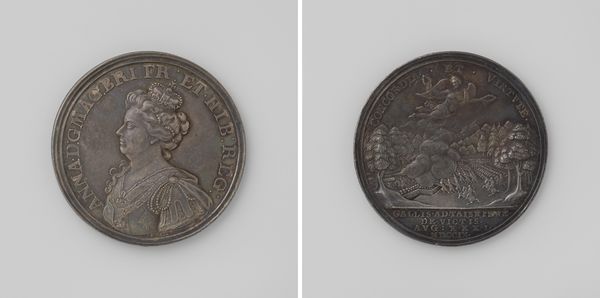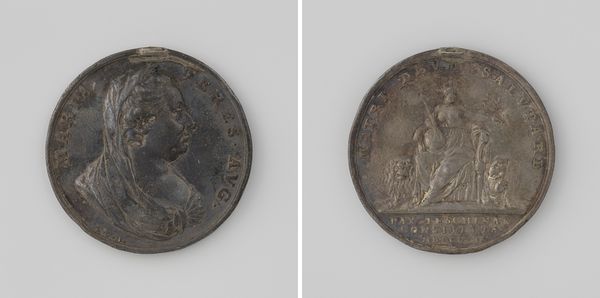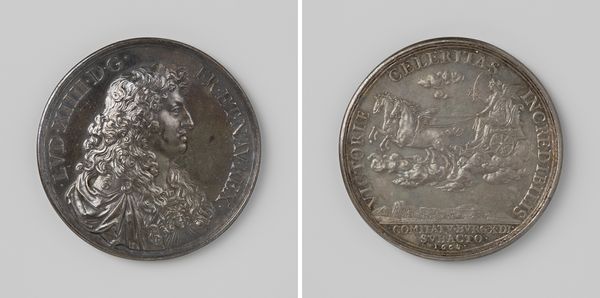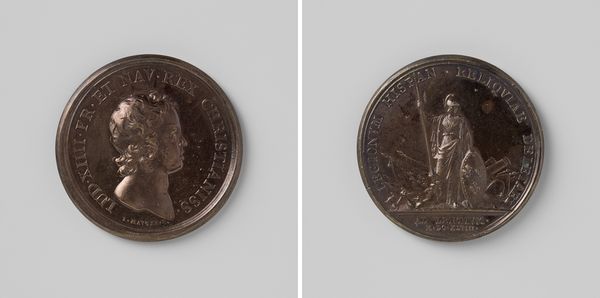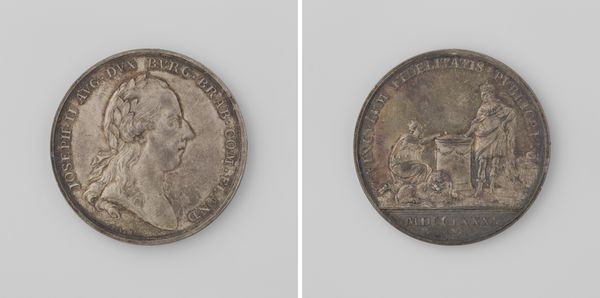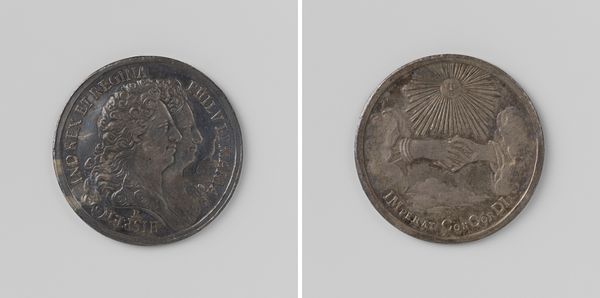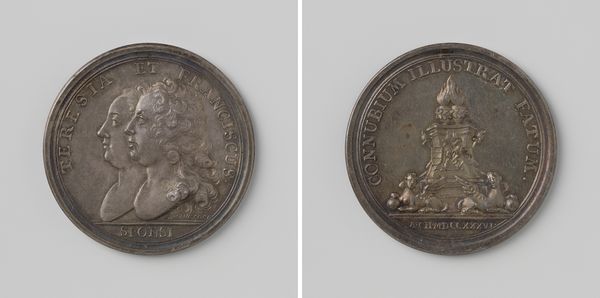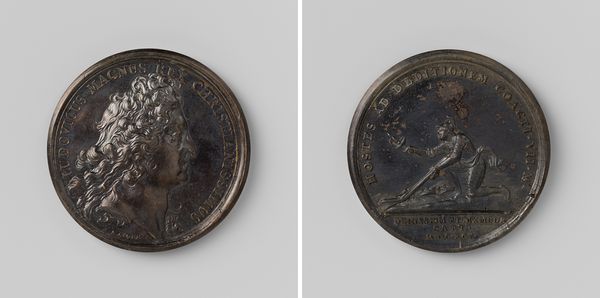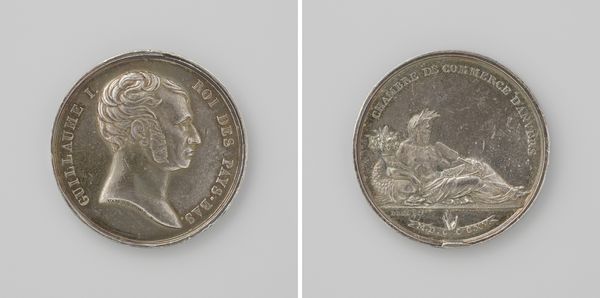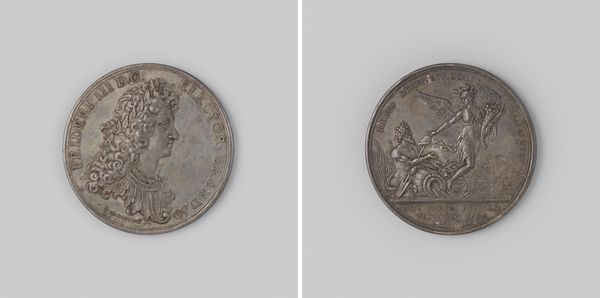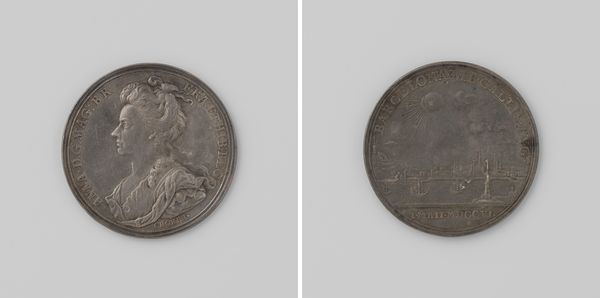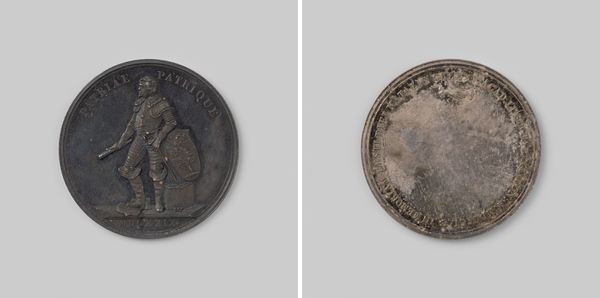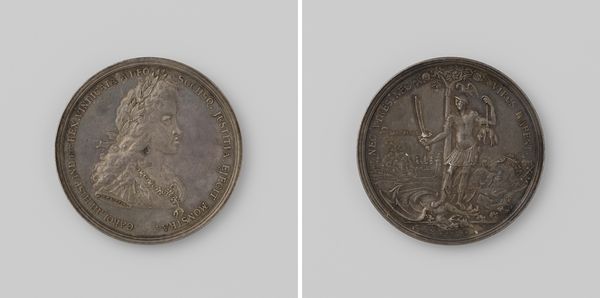
Overwinningen bij Hohenlinden en Marengo en vrede van Luneville en Amiens, ter ere van Napoleon Bonaparte, premier consul van Frankrijk 1802
0:00
0:00
metal, relief, bronze, sculpture
#
portrait
#
medal
#
neoclacissism
#
metal
#
sculpture
#
relief
#
bronze
#
sculpture
#
history-painting
Dimensions: diameter 4 cm, weight 24.22 gr
Copyright: Rijks Museum: Open Domain
Editor: This is a bronze medal from 1802, by Johann Martin Buckle. It's titled "Victories at Hohenlinden and Marengo and Peace of Lunéville and Amiens, in honor of Napoleon Bonaparte, First Consul of France". I’m struck by the clean lines and the stark profile of Bonaparte. What do you see as the most important aspects of its visual language? Curator: Its Neoclassical style reveals a preoccupation with order, reason, and symmetry. Note the balance of elements and the shallow depth of the relief, hearkening back to ancient Greek and Roman coins and medals. The smooth, polished bronze reflects light, enhancing the clarity of form. Are you familiar with semiotics and the formal relationships presented? Editor: Vaguely, but what about semiotics here? Curator: Let us observe how form itself signifies meaning. Bonaparte’s portrait, in profile, suggests a timeless hero. The laurel wreath on the reverse, carried by Victory, conventionally symbolizes triumph. Even the circular form of the medal reinforces notions of wholeness, completion, and unending glory. Does that inform your view? Editor: It does clarify how every aspect contributes to the overall message! The cold, hard metal even feels like it emphasizes Napoleon’s strength. It's fascinating how such simple forms can convey such powerful ideas. Curator: Indeed, by focusing on the formal elements—line, shape, texture, composition—we gain insights into the intentions of the artist and the values of the period, a semiotic study. Hopefully you can apply this when interpreting any artwork. Editor: I will try. Thanks.
Comments
No comments
Be the first to comment and join the conversation on the ultimate creative platform.
